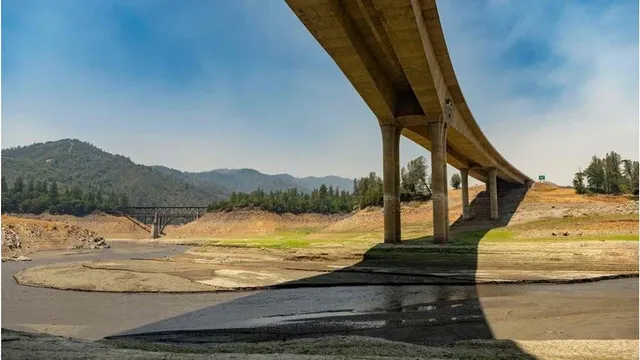High temperature in the United States and Canada: what warning signs the hot weather in North America gives us
The occurrence of "hot-cover" weather in North America gives me an ominous premonition.
It is not because of the new maximum temperature records in Canada and the Northwestern United States, but the new maximum temperature far exceeds the old record.
Prior to this, the record for the highest temperature in Canadian history was set in 1937, when 45 degrees Celsius occurred in Lytton, British Columbia, Canada.
Normally, even if there is a new maximum temperature record, there will only be a slight increase each time, perhaps less than one degree Celsius, but this time the maximum temperature record is not only refreshed for three consecutive days, and the new maximum temperature is actually higher than the old one. The record exceeds 4.6 degrees Celsius.
Greenhouse gas emissions caused by human activities have indefensibly caused the global temperature to rise, and the global average temperature has increased by about 1.2 degrees from the end of the 19th century to the present.
Many people may think that the research of climate scientists is fussing and self-disturbing, but climate change is actually happening, not just a warning.
Professor Brian Hoskins, a well-known British climate scientist, said, "The occurrence of such an abnormal record deserves our vigilance. All climate models tell us that the future is only a conservative estimate. If it comes true, then we are lucky."
What he means is that some places may be worse than the climate model estimates in the future.
Climate scientists use computer-calculated models to predict future changes in the Earth’s climate, but they use approximate data on global temperature, which may not be so accurate for local areas. The temperature in some small places may be higher than estimated. Maybe it will be much higher.
In order to prepare policy makers for extreme weather events, scientists are currently looking for ways to predict the near-crazy extreme weather that may occur in the future.
Not only heat waves, but also extreme weather phenomena such as torrential rains that cause floods in local areas, we must be prepared before we realize that greenhouse gases will bring chaos to the earth’s climate.
The Met Office hopes that their latest supercomputer can calculate a more accurate prediction model, but some people are skeptical.
At the same time, the global temperature continues to rise, and the reference values used in scientific calculations are also constantly changing. The average temperature of the earth has risen by 1.2 degrees compared with before the industrialization of human beings. On this basis, the extreme high temperature in Canada has become more serious.
In the next 10 years, the average temperature of the earth may rise by 1.5 degrees compared with the level before industrialization. If we do not make a radical change, it may rise by 2 degrees. If it rises by 2 degrees, you can imagine what it is. Situation?
Baroness Worthington, the main drafter of the British Climate Change Act, said, “Climate scientists are not just worried, they are all frightened.”
"They worry that climate change may not have a safe landing site. We hope to have a safe carbon budget, that is, a safe carbon emission that will not seriously damage the climate, but what if there is no so-called safe carbon emission? do?"
"What if the safe carbon budget is zero? What should we do? We cannot beautify this potential reality."
The ruling authorities are trying to avoid this potential, but as early as the 1980s, the former British Prime Minister Margaret Thatcher had already warned about this.
In 1989, she stated at the United Nations General Assembly, “Greenhouse gases are harming the earth’s environment, and future changes will be deeper and more extensive than we know. The impact of such changes is just like how humans discover how to split atoms. The impact may be more far-reaching."
Mrs. Thatcher also said, "It is meaningless to argue over who is responsible or who should bear the cost here. The problem can only be solved through extensive international cooperation efforts."
This insight came from Mrs. Thatcher. If the world recognized the climate change warning early, what would happen now?
But some climate skeptics question Thatcher's views, and some climate skeptics are backed by fossil fuel companies that have produced false news for decades.
Rich countries focus on economic growth rather than saving the planet. Developing countries believe that they have reasons to put their economy ahead of environmental protection, just like rich countries.
The rich countries use the money that aids the poor countries to develop clean technology, and international negotiations have been unable to achieve the difficult and comprehensive changes that Thatcher deemed necessary.
Finally, many countries have finally begun to formulate policies to reduce greenhouse gas emissions in the coming decades.
They are not only worried about the phenomenon of heat cover. In recent years, we have seen many extreme climates around the world, including the Arctic, Antarctic, and even the Himalayas.
Some scientists warn that if the current trend remains unchanged, some places on the earth will become uninhabitable places for humans in the future.
Governments around the world say more and do less. Although some policies do help to mitigate climate change, the hotter planet is what is happening at this moment, and major countries plan to gradually reduce emissions before 2050.
US President Biden stated that carbon dioxide emissions will be halved from 2005 levels before 2030, but his proposed investment in clean technology has been opposed by the Republican Party.
General Motors and other automakers in the United States have promised to eliminate all vehicles with exhaust emissions by 2035, but the President of the United States has not set a date for a full-scale electric vehicle.
Biden’s climate envoy John Kerry even said that Americans’ lifestyles do not need to be changed. His speech drew more criticism. Experts have made it clear that protecting the climate requires not only new technologies, but also changes to us. Behaviors such as driving a smaller car and eating less meat.
The policy of the British government is not much better. Although the new crown epidemic has caused a significant reduction in railway utilization, the government still invests more than 100 billion pounds in high-speed rail projects, and no one can be sure when the high-speed rail will be carbon neutral.
There is a little positive development in technology and business to climate change. The cost of solar and wind power is getting lower and lower, but according to data from the International Renewable Energy Agency (IRENA), solar and wind power are only enough to supply 14% of the world’s energy needs. .
At the same time, there are still many environmental disasters around the world. The natural gas pipeline in the Gulf of Mexico has caused marine pollution. A green industrial investment trust in London is still dead due to insufficient funds to recruit.
In Asia, there are still plans to build 600 coal-fired power plants, but some of these plans have been cancelled because investors finally understand that coal is not a long-term viable solution.
In this context, the world's richest billionaires and billionaires compete with each other to use huge energy resources to achieve space tourism at all costs. These costs and energy should be used to combat climate change.
The problem we face is that both governments and companies understand the risks that climate change may bring, but the natural world is changing faster than we can react.
Still, Mrs. Thatcher was right that we only have one earth, and we should have taken action decades ago.


You've got a free upvote from witness fuli.
Peace & Love!